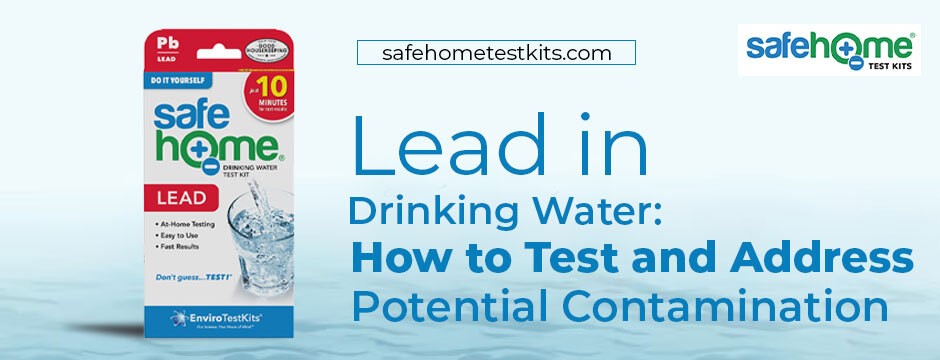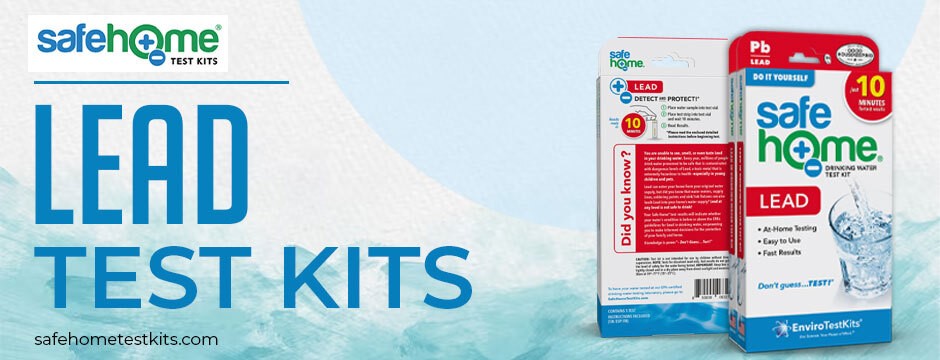Lead in Drinking Water: How to Test and Address Potential Contamination

The safety of our drinking water is a paramount concern, and one issue that has gained significant attention in recent years is lead contamination. Lead, a toxic heavy metal, can find its way into our water supplies through aging infrastructures of city utilities, impacted plumbing systems in our homes and yes, it also exists naturally in numerous groundwater supplies. This blog highlights the alarming issue of lead contamination in drinking water, its adverse health effects, and the essential steps to test and address potential contamination. By understanding the lead sources, conducting accurate lead water tests, and implementing practical Lead removal options, we can ensure that our drinking water remains safe for consumption.
Understanding Lead Contamination in Drinking Water
- ➢ Sources of Lead
Lead contamination in drinking water primarily stems from the deterioration of plumbing systems and materials that contain lead. Old pipes, fixtures, and solder used in plumbing can leach lead into the water supply over time. Homes built before the 1980s were hazardous, as they were more likely to contain lead-containing plumbing materials. Additionally, water from specific sources can exacerbate the issue, as acidic or low-mineral water is more likely to corrode plumbing, leading to higher lead levels in drinking water.
- ➢ Health Impacts of Lead Exposure
Lead is a neurotoxin that can cause severe health problems, especially in children and pregnant women. Even low levels of lead exposure can result in developmental delays, behavioral issues, and cognitive impairment in children. In adults, lead exposure can lead to high blood pressure, kidney problems, and reproductive issues. The long-term effects of lead exposure are particularly concerning, as the accumulated lead in the body can lead to chronic health conditions. It is crucial to promptly address lead contamination to protect individuals’ and communities’ health.
Testing for Lead Contamination
- ➢ Types of Lead Testing Methods
Detecting lead contamination requires accurate testing methods. Homeowners have several options, including home lead test kits, laboratory testing, and professional water quality assessments. Home testing kits are convenient and accessible, offering a preliminary evaluation of lead levels. Laboratory testing provides more comprehensive results and is recommended for a more accurate analysis. Professional water quality assessments can identify the extent of contamination and offer tailored solutions.

- ➢ Conducting a Home Lead Test
Home lead water test kits are user-friendly tools that allow homeowners to perform initial lead tests themselves. To conduct a home lead test, follow these steps:
- Choose a reliable home lead testing kit from a reputable supplier.
- Collect a water sample from the tap you suspect may have lead contamination.
- Follow the kit’s instructions for sample collection and testing.
- Interpret the results based on color changes or indicators provided in the kit.
- If results indicate lead levels above recommended limits, seek further testing and professional guidance.
- While home lead tests provide valuable insights, confirming results with laboratory testing is essential for accuracy and peace of mind.
Addressing Lead Contamination
- ➢ Immediate Steps for Contaminated Water
If lead contamination is confirmed, there are immediate steps to take to reduce exposure:
- Use alternative water sources like bottled water for drinking and cooking.
- Flush pipes by running the tap for several minutes before using the water.
- Install water filters certified to remove lead for an additional layer of protection.
- ➢ Long-Term Solutions
Long-term solutions are crucial to eliminating lead from the water supply:
- Replace lead pipes, fixtures, and plumbing materials with lead-free alternatives.
- Consider installing point-of-use water filters at taps used for drinking and cooking.
- Seek professional plumbing assistance to address lead contamination at its source.
- Choosing certified water treatment systems and working with qualified professionals is essential to ensure effective and lasting solutions.
Preventive Measures and Regulatory Guidelines
- ➢ Lead Regulations and Standards
Lead contamination is regulated under the Safe Drinking Water Act (SDWA) in the United States. The Maximum Contaminant Level (MCL) for lead in drinking water is set at 15 parts per billion (ppb). However, no level of lead exposure is considered safe, especially for vulnerable populations. Local water quality regulations may have stricter guidelines, underscoring the importance of regular water testing and monitoring.
- ➢ Homeowner's Guide to Preventing Lead Exposure
Homeowners can take proactive steps to prevent lead exposure and contamination:
- Conduct regular water testing, especially in older homes.
- Flush taps after periods of non-use, such as vacations or weekends.
- Opt for lead-free plumbing materials when renovating or repairing plumbing systems.
- By adopting these preventive measures, homeowners can contribute to ensuring safe and clean drinking water for themselves and their families.
Thorough Laboratory Testing with Safe Home® LEAD



